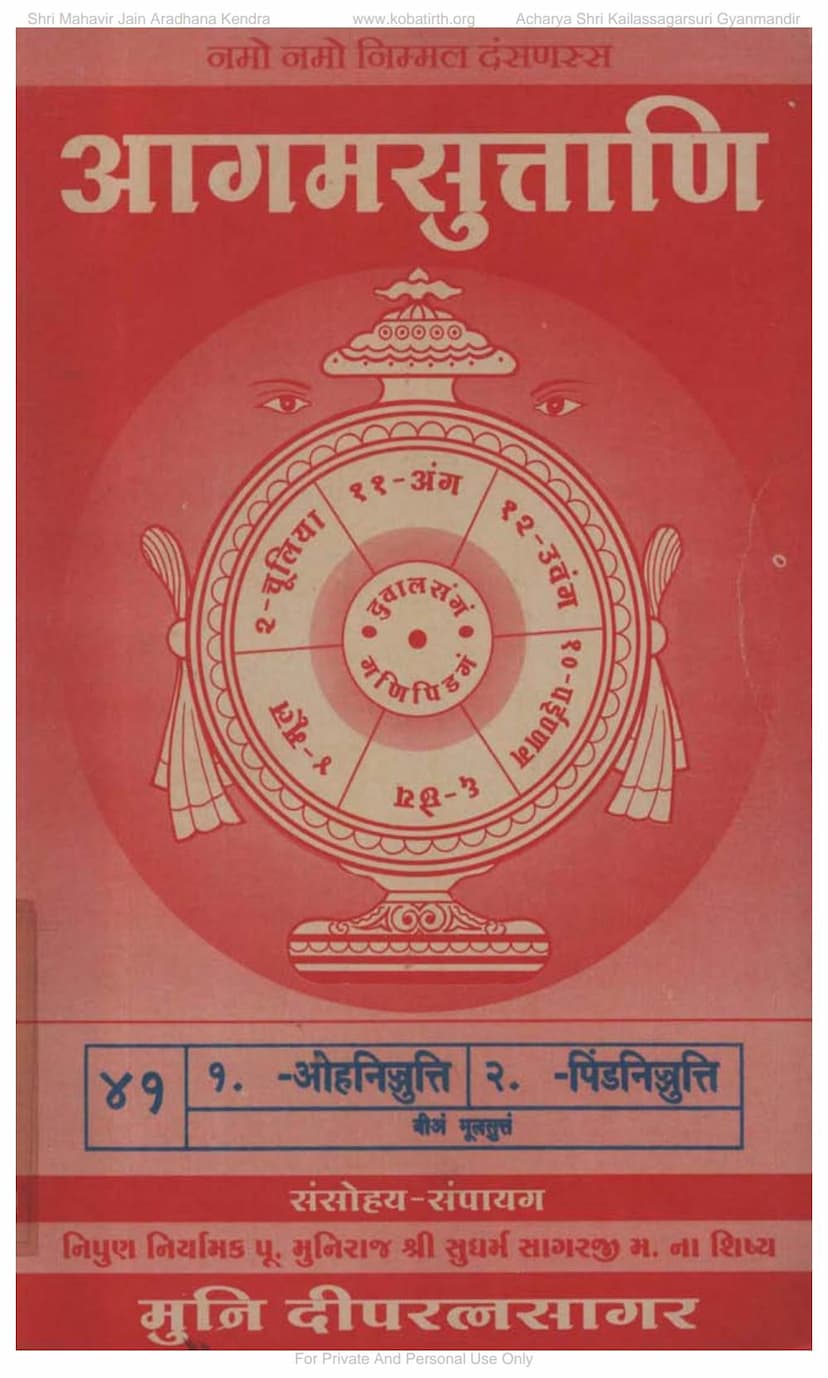Agam 41B Ohnijjutti Mulsutt 02B Moolam
Added to library: September 1, 2025

Summary
Here's a comprehensive summary of the provided Jain text, focusing on the content and acknowledging the contextual information:
This document is a Jain scripture, specifically Agam 41B, Ohnijjutti Mulsutt 02B, Moolam. The authors are listed as Dipratnasagar and Deepratnasagar, and the publisher is Agam Shrut Prakashan. The text is presented as being for "Private And Personal Use Only" and is associated with the Shri Mahavir Jain Aradhana Kendra and Acharya Shri Kailassagarsuri Gyanmandir.
The majority of the provided pages (Pages 3-9) consist of extensive lists of donors and supporters who contributed financially to the publication of this text and related Jain scriptures. These lists highlight individuals and organizations, often mentioning their location and sometimes commemorating specific events like anniversaries or religious observances. This clearly indicates a significant community effort and financial backing behind the dissemination of this scripture.
Page 1 and 2 contain introductory pages, including devotional salutations like "Namo Namo Nirmal Darshanass" (Salutations to Pure Vision) and acknowledgments of spiritual guides and teachers. It also includes details about the printing and composition of the book.
Page 6 and onwards (Page 6-8) also contain lists of other published works by Agam Shrut Prakashan, indicating a broader effort to publish and preserve Jain scriptures. This list includes a wide range of texts covering various aspects of Jain philosophy, rituals, and history.
The core of the text itself, presented in Prashist Nimbndham (Appendices) and the primary content starting from Page 10 to Page 51, appears to be the Ohnijjutti (Piṇḍa-nirukti), which is part of the Moolasutra. Based on the structure and the repeated phrases within the Gujarati script, this section meticulously details the Jain principles and rules related to:
- Food and its consumption (Pinda-nirukti): This is a central theme, with detailed explanations of various types of food, how they are prepared, consumed, and the associated rules and prohibitions. It delves into the purity and impurity of food based on its origin, preparation, and ingredients.
- Classification of food and its components: The text seems to categorize food based on its elements (earth, water, fire, air), living beings (one-sensed to five-sensed), and their states (raw, cooked, mixed, pure, impure).
- Actions and intentions related to food: A significant focus is placed on the actions and intentions of the person consuming or preparing the food, as these determine the ethical implications and the karmic consequences. This includes detailed explanations of various "doshas" (faults) associated with food consumption.
- Rules for ascetics (Sadhus and Sadhvis): The scripture likely outlines the strict dietary regulations and practices that Jain monks and nuns must follow to maintain their spiritual discipline and avoid accumulating negative karma.
- Detailed classification of faults (Doshas) related to food: The extensive listing of faults (e.g., Sankya, Sankita, Makhiya, Adhyavavakar, Uggama Dosha, etc.) suggests a deep and systematic understanding of the subtle aspects of Jain ethics applied to daily life.
- Specific examples and analogies: The use of "Gaha" (verses) often indicates the presence of specific examples and analogies to illustrate complex points, making the teachings more accessible.
- Structure and commentary: The numbering and the repetition of terms like "Nijjutti" and "Moolam" suggest a commentary or exposition on the original Moolasutra. The references to "Vritti" (commentary) with English numerical indexing further indicate a scholarly approach to the text.
In essence, the provided document represents a scholarly edition of a significant Jain scripture, Piṇḍa-nirukti, likely a foundational text for understanding the meticulous ethical guidelines surrounding food and its consumption within the Jain tradition. The extensive lists of donors highlight the community's commitment to preserving and disseminating these teachings.